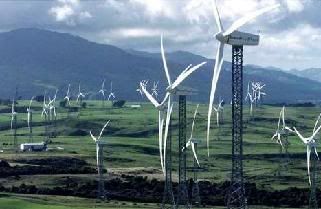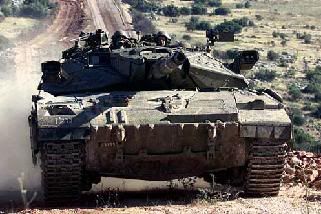Labhekistan
| 'The Democratic-Socialist Union of Labhekistan | |
 | |
| |
| National flag | |
| Motto | Державой с помощью свободы |
| Anthem | Hail, O Labhekistan |
| Capital and largest city | Augustgrad |
| Official Languages |
Russian, English |
| Population - Total |
1,524,119,358 |
| GDP - Total (NSD) - GDP/capita (NSD) |
$61,267,500,000,000 $40,845 |
| Currency | Labhekistan Dollar (L$) = $1.03 USD |
Labhekistan (Russian: Лабонкыятн), officially The Democratic-Socialist Union of Labhekistan, is a vast, culturally diverse nation, with citizens from a variety of ethnicities. It's official languages are Russian and English, with both languages being spoken by the majority of the population. However, many other languages are spoken across the country, including French, Arabic, and Japanese.
Labhekistan is a Social Democracy with the leader being elected in democratic elections. The current head of state is Prime Minister Alexi Strumov. A technologically advanced and industrialized nation, Labhekistan is a leader in its region for healthcare and education. Labhekistan has abundant natural resources, including oil, natural gas, lumber, and hydro-electric power.
Government
Labhekistan is currently a democracy with strong socialist infulences. The Prime Minister, Alexi Strumov, is also the leader of the People's Socialist Party, which currently holds a majority of seats in the parliament.
All the legal framework of Labhekistan is contained within the Constitution of Labhekistan. The Constitution contains the rights and freedoms of Labhekistani citizens, which generally cannot be overridden by any level of government, except in the most extreme of circumstances.
The position of Prime Minister is held by the leader of the party which recieves the majority of votes in a Federal Election. The Cabinet is formally appointed by the Prime Minister, and its members are drawn from the party of the Prime Minister. The Prime Minister exercises vast political power in the appointment of various officials within the government and civil service.
The Federal Parliament is made of of two houses, the House of Commons and the Senate. The Members of the House of Commons, more commonly referred to as the Members of Parliament (MPs), are elected by a majority vote within their electorial district. An MP may come from any party, the the number of MPs elected during a Federal Election determines the overall winner of the election. A general election can be called by the Prime Minsiter at any time. The maximum term for a Prime Minister is ten years, and a federal election must be called every five years. The Senate is also appointed by the Prime Minister, and often used to pass complex legislation, but may not originate any bill imposing taxes or appropraiting public funds.
Economy
</div>Labhekistan has a very strong economy. The people of Labhekistan have many traditional socialist values when it comes to the economy. The government is more involved in the economy than more traditionally capitalist nations, and several industries, including healthcare, public transportation, and education, are all subsidized by the government. The government's progressive socialist policies in regards to healthcare make Labhekistan a beacon of health throughout the world. All healthcare services are provided free of charge, and the nation's well-funded and highly capable hospitals are the envy of many capitalist nations with less progressive policies.
Labhekistan's exports include natural resources (oil and natural gas, zinc, uranium, coal, gold, aluminum, lumber, etc.), automobiles, pharmaceuticals, computers, and aviation technology. Labhekistan is also one of the largest exporters in the region of renewable energy, generally drawn from solar, hydroelectric, and wind power. Although Labhekistan is not a nation that values the environment zealously, many steps have been taken to reduce emissions throughout Labhekistan by using alternative fuel and power sources. Currently, the global market has been focusing on Labhekistan's extensive research on corn ethanol as an alternative fuel source.
Demographics
The population of Labhekistan is currently more than one billion people, the majority of whom live in dense urban areas, such as the capital, Augustgrad. The majority of Labhekistan citizens are Russian (35%) and English (32%), but there are also many citizens of other ethnicites, including Arabs, French, Spanish, German, and Japanese.
Labhekistan has a very high immigration rate, which is partially responsible for the surging population. Labhekistan also accepts many refugees, who often settle in or around the largest cities.
Labhekistani citizens practise a wide variety of religions. The majority are Christian (52%), however, there are also many Muslims (21.2%), and Jews (6%). 18% of all Labhekistani citizens claimed no religious affiliation.
Education
Education in Labhekistan recieves a very high portion of the government budget. While conservative in many areas, the people of Labhekistan are very progressive when it comes to eduction. Primary Education (mandatory from ages 6-18) is composed of twelve grades or "Education Levels", and is provided free by the government. The adult literacy rate in Labhekistan is 100%. Secondary Education (after graduation) is administered by the Federal Government. Secondary Education (including colleges and universities) is also provided free by the government, as long as certain qualifications are met. (For example: A student wishing to study medicine must score a certain mark on an entry examination to go to a medical university. If the mark is met, than the government will provide education free of charge.) More than 70% of all Labhekistani citizens have a secondary education.
Geography
Labhekistan is located on one of the smaller continents in Western Haven, on the Western coast of the Aralonian Channel. Labhekistan is bordered by the Cravanian Home Countries to the Northeast, Alacea to the west, and by the Eastern Havenic Mandate (a colony of the Questerian Empire) to the East. Across the Aralonian Channel, Labhekistan shares an ocean border with Central Prestonia.
The majority of Labhekistan's 1.5 billion citizens live in the southern part of the nation or on the group of large islands off the coast. Many of Labhekistan's largest cities are located on the coastal lowlands, amongst the many bays and river deltas that are located there. The southern lowlands are generally temperate throughout the year, however, unlike much of Labhekistan, they do not have the long, cold winter of the northern steppes.
The Byel Mountain Chain runs more or less through the center of the country, dividing the southern lowlands from the steppes and agricultural centers to the north. Cities in and around the mountain chain, such as Urengoyy and Voronezh, are popular tourist attractions due the excellent skiing conditions which occur throughout the long winter months, as well as their scenic beuty and mountain trails.
North of the Byel Mountains, the northern steppes feature gently rolling hills and unending wheat fields which stretch to the horizon. The northern steppes provide most of the agriculture for Labhekistan, but are also host to several large cities near the Labhekistan-Cravan border. The steppes generally have a colder winter than the lowlands due to their proximity with the mountains, but have more stable weather which is well suited for agriculture.
Military
</div>Labhekistan's Armed Forces currently consist of 1.72 million members, which are divided into three services, the Army, Navy, and Air Force, and a further 1.20 million in the reserve components, . The Labhekistan Armed Forces is an entirely volunteer military, with compulsory military service having been abolished in 1992.
Labhekistan's current Chief of Defense Staff of the Armed Forces is General Mikhail Sergetov, and under him is Deputy Chief Admiral Gregori Putkin. Each branch of the Armed Forces is led by a Department Chief, who reports directly to the Chief of Defense Staff.
The Labhekistani Armed Forces currently has a budget of $1.5 trillion Labhekistani Dollars ($1.545 trillion USD) anually. Although Labhekistan has one of the smaller militaries of Haven, its forces benefit from the highest quality training and equipment, making them an elite, if small, fighting force.
Labhekistan Army
For more information, see the full article. Labhekistan Army
The Labhekistani Army is the largest of the Armed Forces branches, with 875,000 service personnel and 600,000 reservists. The Labhekistani Army is divided into both the Regular Army and the Reserve Army. The Reserve Army functions not only as a "home guard" which is trained to defend Labhekistan but may serve abroad, but also a capable reserve force with members training in addition to working another full or part-time job.
The Labhekistani Army consists of 13 Armies, which are further divided into four Army Groups each consisting of three armies. The 4th Army is independent from the traditional Army structure, instead serving on standby with the UFAN Rapid Reaction Force 1.
Each army consists of four or more divisions, usually made up of two motorized infantry divisions, an armour division, and a support and logisitics division.
Labhekistan Navy
For more information, see the full article. Labhekistan Navy
The Labhekistan Navy is the second-largets branch of the Armed Forces and currently consists of 600,000 personnel. The Labhekistan Navy consists of over one thousand ships, most of which are concentrated on the southern coast or amongst the many islands to the south. The Labhekistan Navy consists of four branches, the Navy, the Naval Air Force, the Naval Infantry (equivalent to the Marines), and the Naval Reserve, which is responsible for coastal patrol, mine hunting, drug interdiction, and fisheries patrols.
The Labhekistan Navy is currently organized into 16 Fleets, the largest of which being the 1st, 2nd, 3rd, 4th, and 5th High Seas Fleets. The 4th High Seas Fleet is currently attached to the UFAN Rapid Reaction Force 1. The Labhekistan Navy has undergone a rapid buildup of stength and manpower in the last decade, and currently operates twelve nuclear-powered aircraft carriers, along with several smaller helicopters and landing craft. The Labhekistan Navy is expected to continue expanding in the future.
Labhekistan Air Force
For more information, see the full article. Labhekistan Air Force
The Labhekistan Air Force is the smallest of the three branches of the Armed Forces, with aproximately 300,000 personnel currently serving. The Labhekistan Air Force recruits only the best possible candidates, and spends a large amount of money providing its pilots and ground crews with the best equipment and training possible. Therefore, Labhekistan's Air Force is considered to be one of the more elite Air Forces of Eastern Haven.
The Labhekistan Air Force currently operates several types of fighters, the majority of which have been procured from GEM Aerospace of the Candirian Empire. The LAF also operates several types of transports which origninated in the Russian Federation or the former Soviet Union. The LAF also operates attack helicopters in support of the Labhekistan Army, after the Labhekistan Army Air Force was disbanded in 1991.


